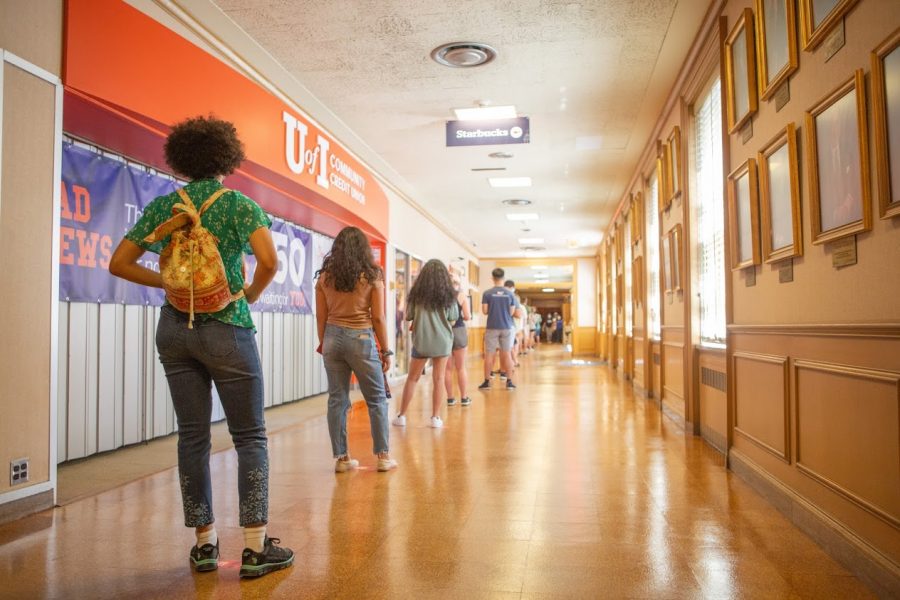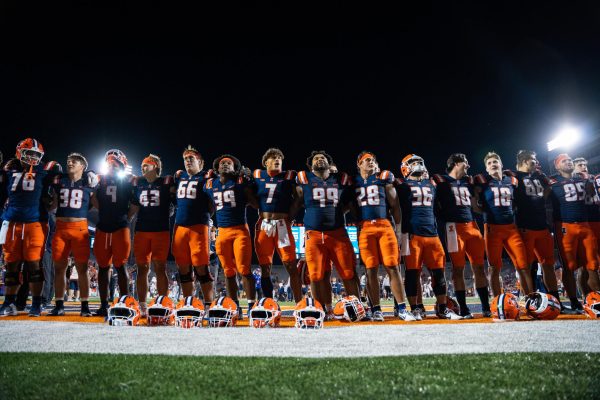Take a look into UI’s rigorous COVID-19 testing
Students wait in line to take COVID-19 tests at the Illini Union on Aug. 23. The University’s tesing programs allows thousands of students to test each day and receive their results within 24 to 48 hours.
Sep 8, 2020
Since the beginning of the COVID-19 pandemic, the world has been taking precautions, quarantining to try to avoid the spread of the deadly virus. Despite the virus, students have returned to campus at the University of Illinois.
The University has implemented a rigorous testing program. This program allows thousands of students to test each day and receive their results within 24 to 48 hours. The procedure for this test involves depositing saliva in a test tube.
All around campus, students line up to take the quick test. Students are required to swipe their I-cards and identify their race and date of birth. After that, they receive a personalized test tube for them to spit in. Once they have received their test tube, they head to a specially marked spot that is a square marked with tape. In this square, they dribble into the test tube until they have filled the bottom portion with spit. Then, they return the test tube to an official, and it is sent off to be tested.
This method of testing is allowing for somewhere between 10,000-15,000 saliva-based tests per day. The University’s testing accounts for more than 2% of all the daily testing done in the United States.
Other universities, such as Illinois State University, the University of Missouri and many southern universities have seen huge spikes in cases. In order to get tested at Mizzou, a student must have a doctor’s note. This results in tests being unavailable to the general public and more infected individuals.
Get The Daily Illini in your inbox!
At the University, in order to access certain buildings on campus, you must have a recent negative test on the Safer Illinois app. This app shows students’ recent test history and determines if they are allowed into buildings. It is a widely accepted app and is now being used at bars and other local places.
Recently though, there has been a spike in cases at the University. This means that a two-week lockdown has been initiated for undergraduates. Only essential activities are permitted such as grocery shopping, COVID-19 testing and attending in-person classes.
This lockdown does not mean failure for the testing system as the University’s spike in cases is minuscule compared to some other colleges.
There are other possible reasons for the spike, but the most prevalent one is the irresponsible behavior of the students. Although partying is supposed to have stopped, many fraternities and sororities still continue to host parties at their senior houses and private residences. All social distancing guidelines are thrown out the window.
Hopefully, this two-week break will curb the students’ urge to throw caution to the wind and help teach everyone that staying safe is of the utmost priority.






